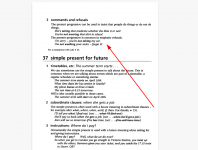Nonverbis
Member
- Joined
- Jun 4, 2021
- Member Type
- Student or Learner
- Native Language
- Russian
- Home Country
- Russian Federation
- Current Location
- Russian Federation
This is from a textbook on grammar called "A Grammar of Present-day English" by I.P. Krylova.
The task is: Use the Present Indefinite or the Present Continuous to refer the actions in the following sentences to the future.
Her voice was sharp and commanding: "I (not to go) home alone. Come on."
I did: don't go. But the answer key gives "am not going". Well, my variant seems to be erroneous anyway. But why the Present Continuous is still a mystery to me.
The Present Continuous expresses actions which will take place in the near future due to one's previous decisions.
But in this task it seems to me that the decision is done at the moment of speaking. It is just about the immediate future.
Could you comment on this?
The task is: Use the Present Indefinite or the Present Continuous to refer the actions in the following sentences to the future.
Her voice was sharp and commanding: "I (not to go) home alone. Come on."
I did: don't go. But the answer key gives "am not going". Well, my variant seems to be erroneous anyway. But why the Present Continuous is still a mystery to me.
The Present Continuous expresses actions which will take place in the near future due to one's previous decisions.
But in this task it seems to me that the decision is done at the moment of speaking. It is just about the immediate future.
Could you comment on this?
